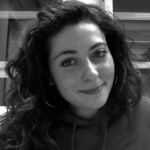Just another day at the chemistry lab. Get in, make sure to wear PPE thoroughly, grab a pipette set, start reading, and applying the steps of the experiment. Pipette hundreds of microliters of a solution, done. Pipette tens of microliters of another solution, no problems. Pipette several picoliters of …, what? Wait! Can we pipet sub-microliter size liquids? The answer will be yes at this time, but we will twist it a bit. As the name suggests, microfluidics is the art of handling tiny amounts of liquids. Can it be helpful when it comes to handling sub-microliter size droplets?
Since the early 2000s, digital microfluidics (DMF) has been proposed as a more versatile candidate in sample processing applications. Most DMF devices use electric field application to control the displacement of droplets, which are separated from the underlying electrodes via a dielectric layer and an nm-thick hydrophobic layer. Once we actuate an electrode, the contact angle, and in turn, the hydrophobicity, of a droplet sitting on top of the electrode decreases due to surface energy changes. This would be a golden moment because if we actuate a neighboring electrode now, the droplet will displace towards the activated electrode. Based on this principle, we can transport, dispense, merge, and split droplets in a digital microfluidic platform.
One constraint of current digital microfluidic systems is that droplet volume is limited by electrode area. Droplets can only be reliably split and displaced above a certain volume as they will not be capable of displacing towards another electrode if their contact area is too small. Working with smaller scale electrodes does not solve the problem either, but it makes evaporation-related problems more pronounced.
In the recent Lab on a Chip article of researchers from the University of Macau (CN) and the University of Lisboa (PT) demonstrated the controllable ejection of satellite droplets to create a digital microfluidic platform that is capable of transporting picoliter-volume droplets. Precise control of ejection position and volume was made possible using a narrow electrode, or a jetting bar, which focused the area of high voltage AC actuation. During a rapid change in electric field intensity beyond the contact angle saturation threshold voltage, the excess energy is released by the ejection of satellite droplets. The dispensing droplet would release picoliter sized volumes onto the jetting bar which were then collected by another droplet moving over the jetting bar (Fig. 1). Volumes between 5 pL to 20 nL can be produced by repeatedly dispensing and collecting picoliter-size droplets at the jetting bar. The dispensed volume could also be controlled by changing increasing the width of the jetting bar for greater volumes. Dispensing volume can also be carefully controlled by the strength of the electric field, the actuation frequency, and actuation time.
The authors showed that the picoliter- volume dosing system can be used in a dequenching assay. Fluorescent DNA probes specific to S. aureus were delivered to droplets containing S. aureus and K. pneumonia using this assay. The dispensed satellite droplets successfully delivered the DNA probes to the droplets. The authors built a quantitative relationship between the degree of fluorescence and volume delivered in the S. aureus droplet accordingly. The authors think that this new technique may make microfluidics more accessible in sample preparation for clinical and lab studies in the future.

Figure 1. The dispensing drop releases satellite droplets under high voltage AC actuation of the jetting bar. The satellite droplets are then taken up by another droplet, facilitating volume transfer without the merging of either the dispensing or pickup-up droplet.
To download the full article for free* click the link below:
Turning on/off satellite droplet ejection for flexible sample delivery on digital microfluidics
Haoran Li, Ren Shen, Cheng Dong, Tianlan Chen, Yanwei Jia, Pui-In Mak and Rui P. Martins, Lab Chip, 2020, Lab on a Chip Hot Articles
DOI: 10.1039/D0LC00701C
About the Webwriters
 Burcu Gumuscu is an assistant professor in BioInterface Science Group at Eindhoven University of Technology in the Netherlands. She strives for the development, fabrication, and application of smart biomaterials to realize high-precision processing in high-throughput microfluidic settings. She specifically focuses on the design and development of lab-on-a-chip devices containing hydrogels for diversified life sciences applications. She is also interested in combining data-mining and machine learning techniques with hypothesis-driven experimental research for future research.
Burcu Gumuscu is an assistant professor in BioInterface Science Group at Eindhoven University of Technology in the Netherlands. She strives for the development, fabrication, and application of smart biomaterials to realize high-precision processing in high-throughput microfluidic settings. She specifically focuses on the design and development of lab-on-a-chip devices containing hydrogels for diversified life sciences applications. She is also interested in combining data-mining and machine learning techniques with hypothesis-driven experimental research for future research.
 Miguel Faase is a Ph.D. student in BioInterface Science Group at Eindhoven University of Technology in the Netherlands. He focuses on the development of high-throughput screening platforms for biomaterial research under the supervision of Burcu Gumuscu.
Miguel Faase is a Ph.D. student in BioInterface Science Group at Eindhoven University of Technology in the Netherlands. He focuses on the development of high-throughput screening platforms for biomaterial research under the supervision of Burcu Gumuscu.










